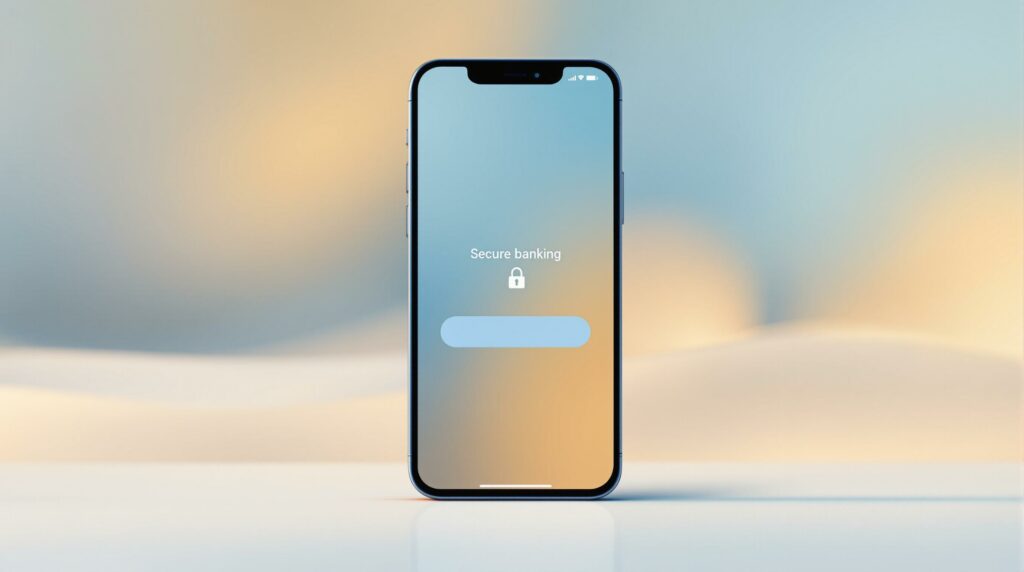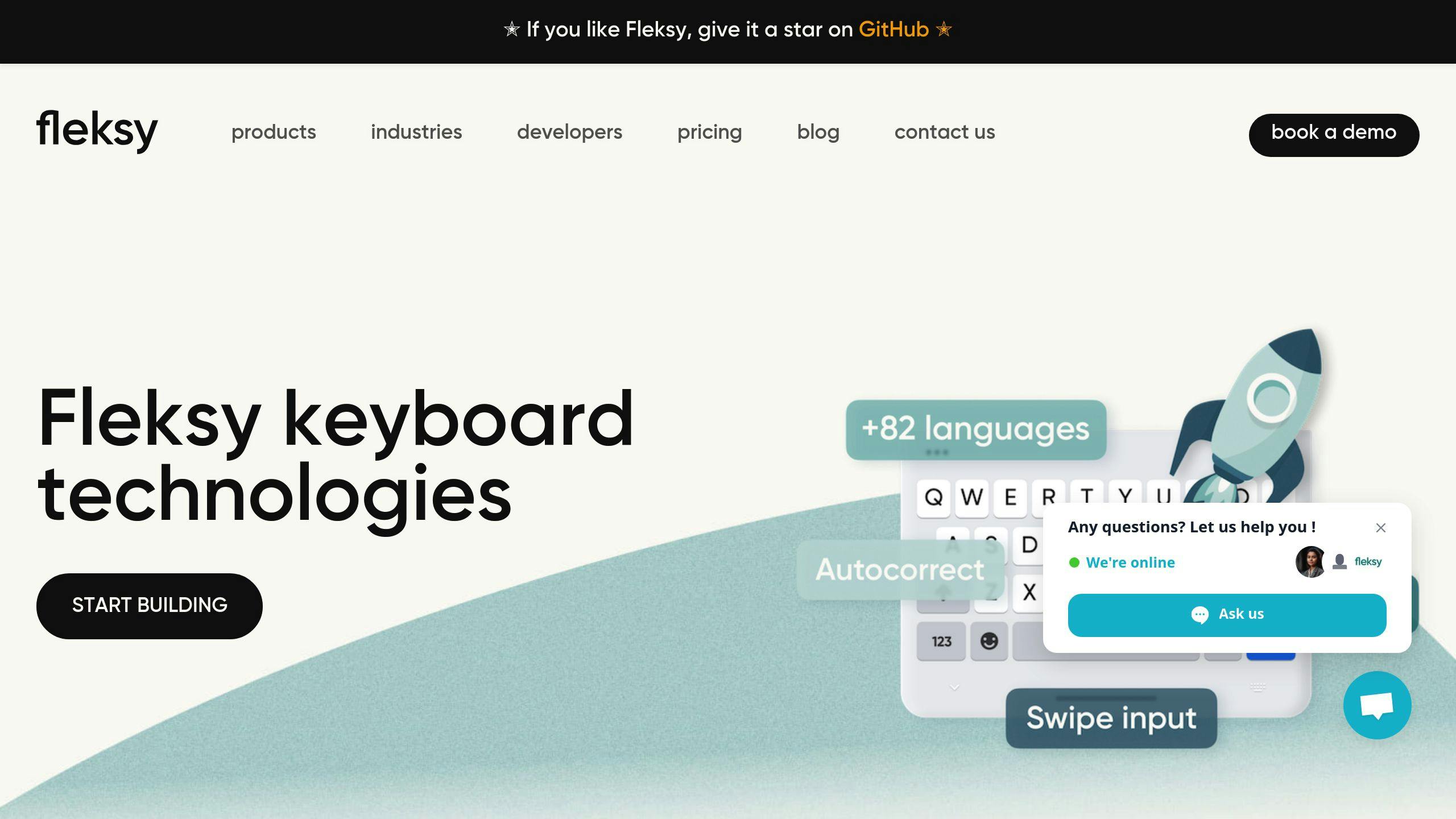Table of Contents

Protecting sensitive user information like passwords and PINs is essential for banking apps. Cyber threats such as keylogging, phishing, and malware make secure text input a critical area of focus. This guide explains how to safeguard text input using encryption, secure keyboards, and compliance with financial security standards.
Key Takeaways:
- Encryption: Use AES-256 for stored data and TLS for transmissions to protect sensitive information.
- Prevent Keylogging: Employ app shielding and secure virtual keyboard SDKs with features like layout scrambling and encrypted input buffers.
- Compliance: Adhere to standards like PCI DSS, GDPR, and PSD2 to meet legal requirements and enhance security.
- Regular Security Testing: Perform audits, penetration tests, and apply updates promptly to address vulnerabilities.
- User Education: Teach users about safe input practices and phishing awareness to reduce risks.
Quick Overview:
| Security Measure | Purpose | Example Tools/Standards |
|---|---|---|
| Encryption | Protect input data | AES-256, TLS |
| Secure Keyboards | Block keylogging threats | Fleksy SDK, Promon SHIELD |
| Compliance Standards | Meet legal security mandates | PCI DSS, GDPR, PSD2 |
| Threat Monitoring | Detect and respond to risks | Real-time monitoring systems |
| User Education | Reduce human error | In-app tutorials, push alerts |
By combining these strategies, banking apps can create a secure text input system that protects users and meets industry standards.
Most Secure Virtual Keyboard
Principles for Implementing Secure Text Input
Data Encryption and Secure Transmission
Using strong encryption methods like AES-256 for stored data and TLS for data in transit is critical to safeguarding sensitive banking details [3]. This includes protecting user credentials and transaction information entered into input fields. While encryption shields data effectively, it doesn’t address all risks, such as keylogging. Tackling these requires additional security measures.
Preventing Keylogging and Malware
To combat threats like keylogging and malware, banking apps should employ multiple layers of security. App shielding technology plays a key role here. For example, Promon SHIELD has proven effective in fortifying banking apps against cyber threats and securing user credentials [2]. This type of technology creates a secure environment that blocks malware from capturing keyboard inputs.
Compliance with Financial Security Standards
Banking applications must follow strict regulatory frameworks to ensure they meet legal requirements and maintain user confidence. These standards influence the way secure text input is implemented:
| Standard | Key Requirements | Impact on Text Input |
|---|---|---|
| PCI DSS | Encrypt cardholder data | Encryption needed for payment fields |
| GDPR | Built-in data protection | Requires secure input designs |
| PSD2 | Strong customer authentication | Enforces multi-factor authentication |
Failing to comply with these standards can have costly consequences. From 2014 to 2017, the average cost of cyber attacks on financial services rose by over 40%, reaching $18.28 million per company [2].
To stay compliant and secure, banking apps should integrate:
- Regular security audits to uncover vulnerabilities
- Continuous monitoring of input systems
- Automated threat detection to flag suspicious activities
- Secure infrastructure to protect both the app and user data [3]
Tools for Secure Text Input
Secure Virtual Keyboard SDKs
Banking apps often use secure virtual keyboard SDKs to combat keylogging attacks. For example, Fleksy’s Virtual Keyboard SDK allows for a high level of customization while including security features. It supports over 82 languages and works offline. Key features to look for in secure virtual keyboards include layout scrambling, encrypted input buffers, screen capture blocking, and memory protection – all designed to reduce the risk of keylogging and data theft.
Encryption Libraries and APIs
Encryption libraries play a crucial role in protecting text input data within banking apps. Tools like OpenSSL and Bouncy Castle offer powerful cryptographic functions, including SSL/TLS protocols and lightweight APIs for encryption [1]. These libraries allow developers to implement encryption methods tailored to their app’s specific security needs.
Multi-Factor Authentication Integration
Adding multi-factor authentication (MFA) strengthens security by requiring more than just text input to verify users [3]. While encryption secures data during storage and transmission, MFA ensures only authorized individuals can access sensitive information. Solutions like Promon SHIELD™ offer advanced protection without disrupting the user experience [2].
Best Practices for Secure Banking Apps
Input Validation and Sanitization
Secure your app by ensuring all inputs are properly filtered. Accept only valid characters for each field type and use techniques like pattern matching, character encoding, and data type verification. These methods help prevent injection attacks and maintain data integrity.
While input validation addresses immediate risks, make sure to conduct ongoing security testing to stay ahead of emerging threats.
Regular Security Testing and Updates
To keep your app secure, focus on these essential practices:
- Automated Security Scans: Use tools like OWASP ZAP to continuously identify vulnerabilities.
- Penetration Testing: Schedule quarterly audits by third-party experts to uncover hidden risks.
- Patch Management: Apply security updates within 24 hours of release to address known issues quickly.
- Threat Monitoring: Set up real-time systems to detect and respond to suspicious activities.
Even with these measures, educating users plays a key role in safeguarding banking apps.
Educating Users on Safe Input Practices
Technical defenses are vital, but informed users add another layer of protection. Teach users how to handle sensitive data securely and recognize potential threats.
| Security Risk | User Education Point | Implementation Method |
|---|---|---|
| Secure Environment | Encourage safe network use and strong passwords | In-app notifications and tutorials |
| Phishing Awareness | Show examples of legitimate vs. fake requests | Interactive security guides |
Incorporate user education directly into the app experience with features like:
- Real-Time Tips: Offer security advice during sensitive actions, such as transfers or logins.
- Threat Alerts: Notify users about risks, like using unsecured networks.
- Push Notifications: Keep users informed about new security features and practices.
For extra protection, consider app shielding tools like Promon SHIELD™ to defend against advanced malware attacks [2]. Combining technology with user education creates a stronger, more reliable security framework.
Examples of Secure Text Input in Banking Apps
Example: Using Fleksy Keyboard SDK

Fleksy Keyboard SDK showcases how banking apps can implement secure text input effectively. By combining strong security measures with a user-friendly interface, the SDK ensures encrypted text entry, randomized layouts, and offline protection to guard against keylogging threats.
Here’s how it stands out:
| Security Feature | How It Helps | User Experience |
|---|---|---|
| Encrypted Input | Blocks unauthorized access | Smooth and secure typing |
| Layout Protection | Prevents screen-based hacks | Familiar typing experience |
| Real-time Validation | Identifies input risks instantly | Immediate feedback |
This SDK integrates enterprise-grade security while keeping the app functional and easy to use – making it a strong choice for banking apps.
Lessons from Past Security Breaches
Looking at past breaches reveals valuable strategies for improving secure text input. For example, between 2014 and 2017, financial services companies faced a 40% increase in cyber attack costs, reaching $18.28 million per company [2]. These challenges have influenced current security practices.
Key takeaways:
| Security Issue | Solution | Result |
|---|---|---|
| Credential Theft | Encryption + app shielding | Better access protection |
| Data Interception | Real-time encryption | Safer data transmission |
| Visual Data Leaks | Screen protection tools | Stops unauthorized capture |
“The rise of keylogger attacks on banking apps underscores the need for app shielding technologies like Promon SHIELD to protect user credentials” [2].
Technologies like Promon SHIELD™ show how layered defenses, including encryption, secure keyboards, and app shielding, can effectively counter advanced threats. These examples highlight the importance of combining multiple security measures to ensure safe text input in banking apps.
Conclusion and Future Outlook
Key Points
Banking apps must prioritize secure text input to protect users from escalating cyber threats. Here’s a quick breakdown of the core security layers and their role:
| Security Layer | Implementation | Impact |
|---|---|---|
| Core Protection | Encryption & Secure Keyboards | Safeguards credentials |
| Active Defense | Real-time Monitoring & Updates | Blocks emerging threats |
| User Safety | Education & Interface Design | Minimizes human error |
These layers offer a strong foundation, but with threats evolving constantly, staying ahead requires ongoing updates and vigilance.
Evolving Security Threats
Advanced malware like Emotet and URSNIF are specifically engineered to steal banking credentials. Emotet spreads through phishing emails, while URSNIF uses sophisticated keylogging to bypass standard defenses.
“Emerging threats necessitate continuous innovation in app shielding and secure input technologies.”
To counter these threats, banking apps need to adopt advanced security measures such as encryption, secure keyboards, and real-time monitoring. Moving forward, the focus should be on:
- AI-Driven Tools: Leveraging artificial intelligence for smarter threat detection without compromising usability.
- Regular Testing: Conducting frequent security audits to uncover and fix vulnerabilities.
- Flexible Systems: Building security frameworks that can adapt to new and unexpected threats.
The challenge lies in balancing strong security with a smooth user experience. Protective measures should enhance, not disrupt, the way users interact with banking apps. As cyber threats grow more sophisticated, the commitment to secure text input must remain a top priority, evolving alongside the threat landscape.
